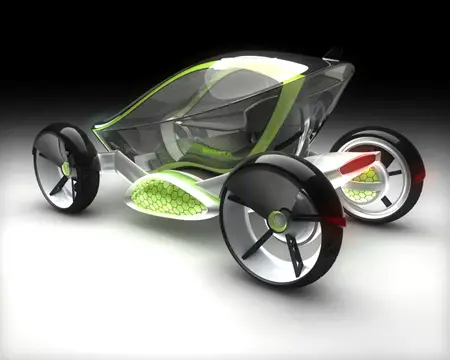Futuristic Technology Biography
Retro-futurism took its current shape in the 1970s, a time when technology was rapidly changing. From the advent of the personal computer to the birth of the first test tube baby, this period was characterized by intense and rapid technological change. But many in the general public began to question whether applied science would achieve its earlier promise—that life would inevitably improve through technological progress. In the wake of the Vietnam war, environmental depredations, and the energy crisis, many commentators began to question the benefits of applied science. But they also wondered, sometimes in awe, sometimes in confusion, at the scientific positivism evinced by earlier generations. Retro-futurism “seeped into academic and popular culture in the 1960s and 1970s,” inflecting George Lucas’ Star Wars and the paintings of pop artist Kenny Scharf alike." [5] Surveying the optimistic futurism of the early twentieth century, the historians Joe Corn and Brian Horrigan remind us that retro-futurism is "a history of an idea, or a system of ideas--an ideology. The future, or course, does not exist except as an act of belief or imagination." [6]
[edit]Characteristics
Retro-futurism incorporates two overlapping trends which may be summarized as the future as seen from the past and the past as seen from the future.
The first trend, retro-futurism proper, is directly inspired by the imagined future which existed in the minds of writers, artists, and filmmakers in the pre-1960 period who attempted to predict the future, either in serious projections of existing technology (e.g. in magazines like Science and Invention) or in science fiction novels and stories. Such futuristic visions are refurbished and updated for the present, and offer a nostalgic, counterfactual image of what the future might have been, but is not.
The second trend is the inverse of the first: futuristic retro. It starts with the retro appeal of old styles of art, clothing, mores, and then grafts modern or futuristic technologies onto it, creating a mélange of past, present, and future elements. Steampunk, a term applying both to the retrojection of futuristic technology into an alternative Victorian age, and the application of neo-Victorian styles to modern technology, is a highly successful version of this second trend.
In practice, the two trends cannot be sharply distinguished, as they mutually contribute to similar visions. Retro-futurism of the first type is inevitably influenced by the scientific, technological, and social awareness of the present, and modern retro-futuristic creations are never simply copies of their pre-1960 inspirations; rather, they are given a new (often wry or ironic) twist by being seen from a modern perspective.
In the same way, futuristic retro owes much of its flavor to early science fiction (e.g. the works of Jules Verne and H. G. Wells), and in a quest for stylistic authenticity may continue to draw on writers and artists of the desired period.
Both retro-futuristic trends in themselves refer to no specific time. When a time period is supplied for a story, it might be a counterfactual present with unique technology; a fantastic version of the future; or an alternate past in which the imagined (fictitious or projected) inventions of the past were indeed real. Examples include the film Sky Captain and the World of Tomorrow, set in an imaginary 1939, and The Rocketeer franchise, set in 1938, both of which are also examples of the genre known as dieselpunk.[7]
Futuristic Technology
Futuristic Technology
Futuristic Technology
Futuristic Technology
Futuristic Technology
Futuristic Technology
Futuristic Technology
Futuristic Technology
Futuristic Technology
Futuristic Technology
Futuristic Technology
Futuristic Technology
Futuristic Technology
Futuristic Technology
Futuristic Technology
Futuristic Technology
Futuristic Technology
Futuristic Technology
Futuristic Technology
Futuristic Technology




















SuperListrificial Intelligence Artificial AssistantsBectus Computing, for example, Brain EmulationSynthetic LifeJingeringRingPlanetaryInternatical LifeExtension - Agging Atonnomus Killing MachineLab
ReplyDelete